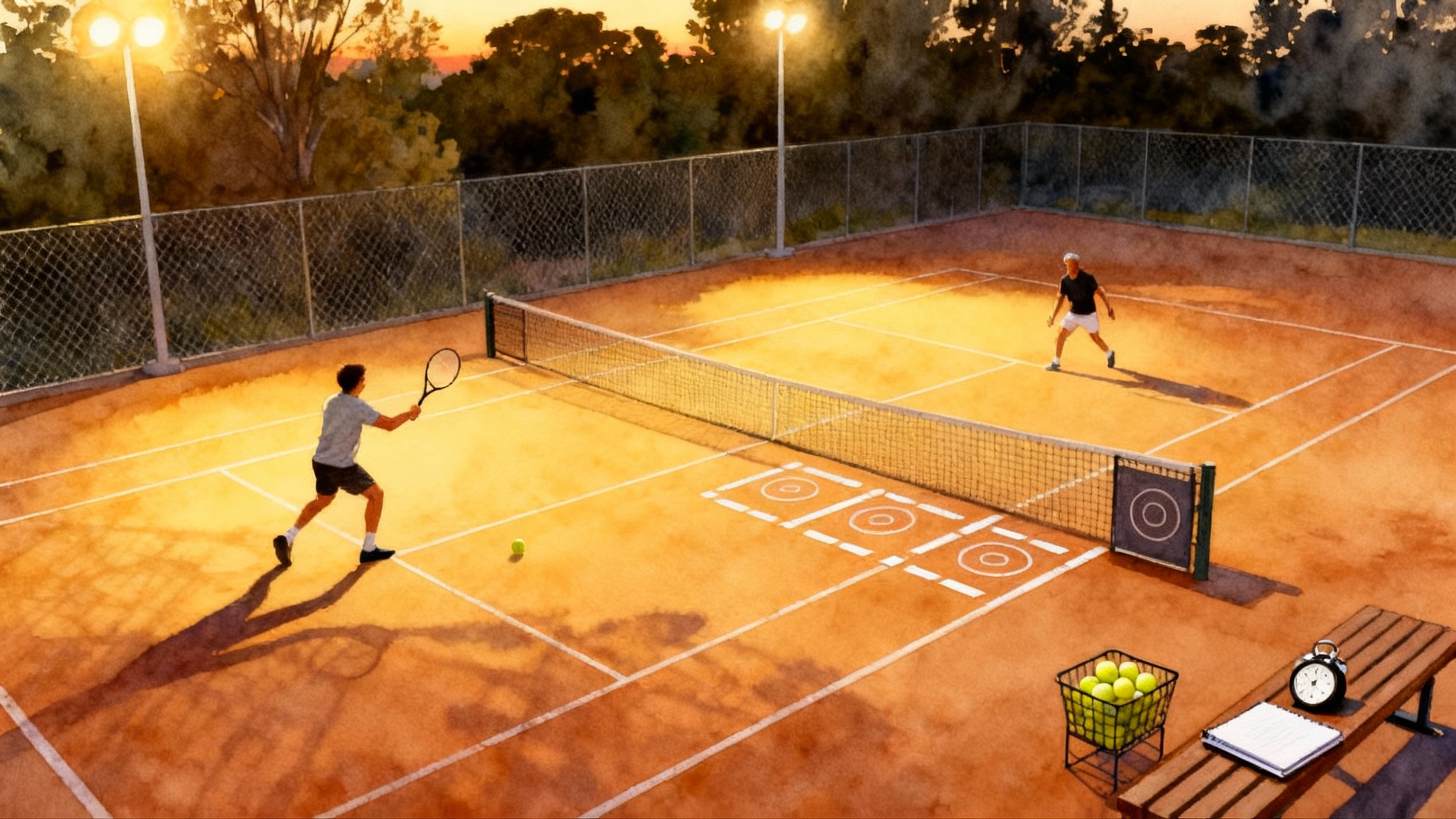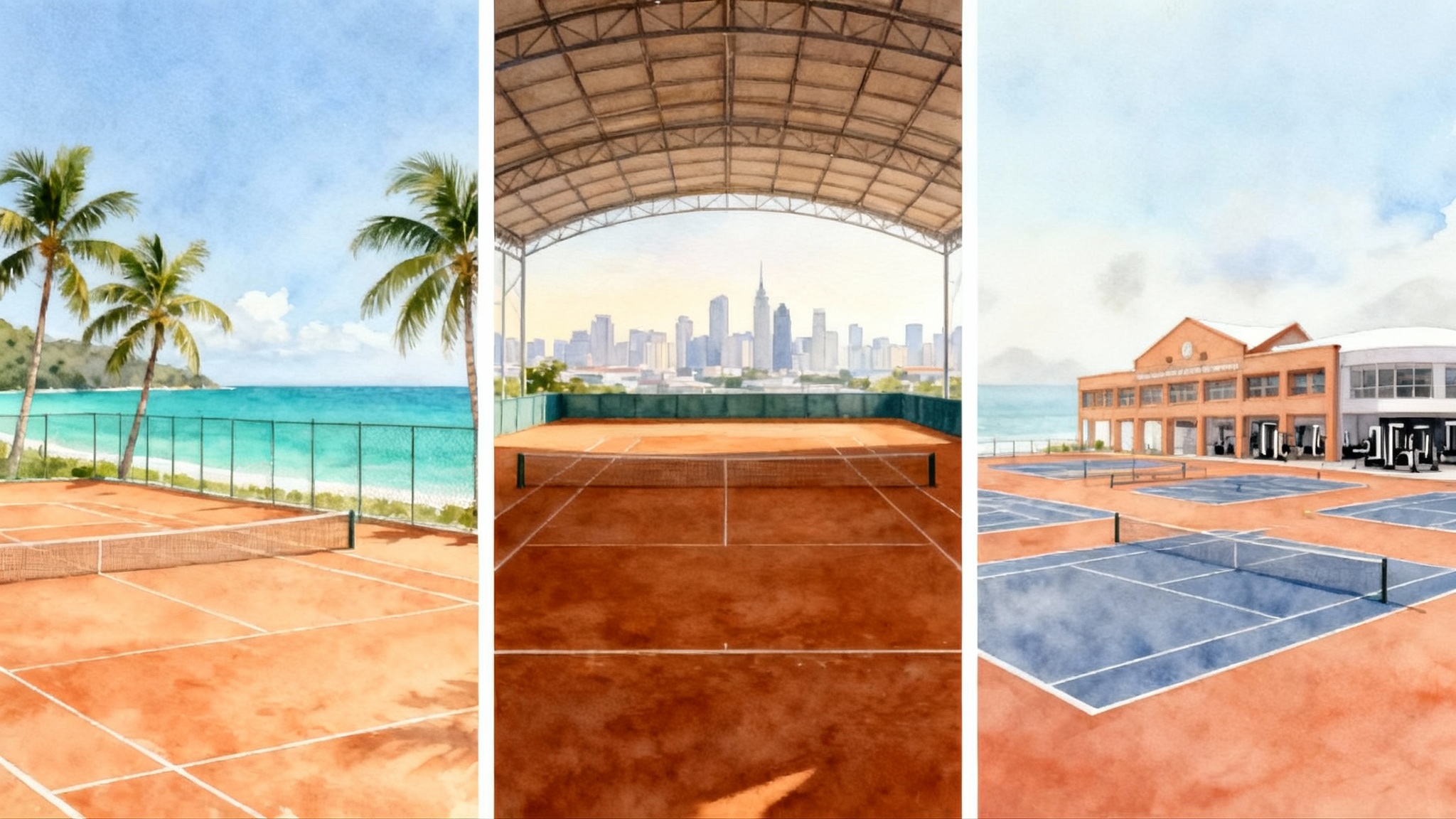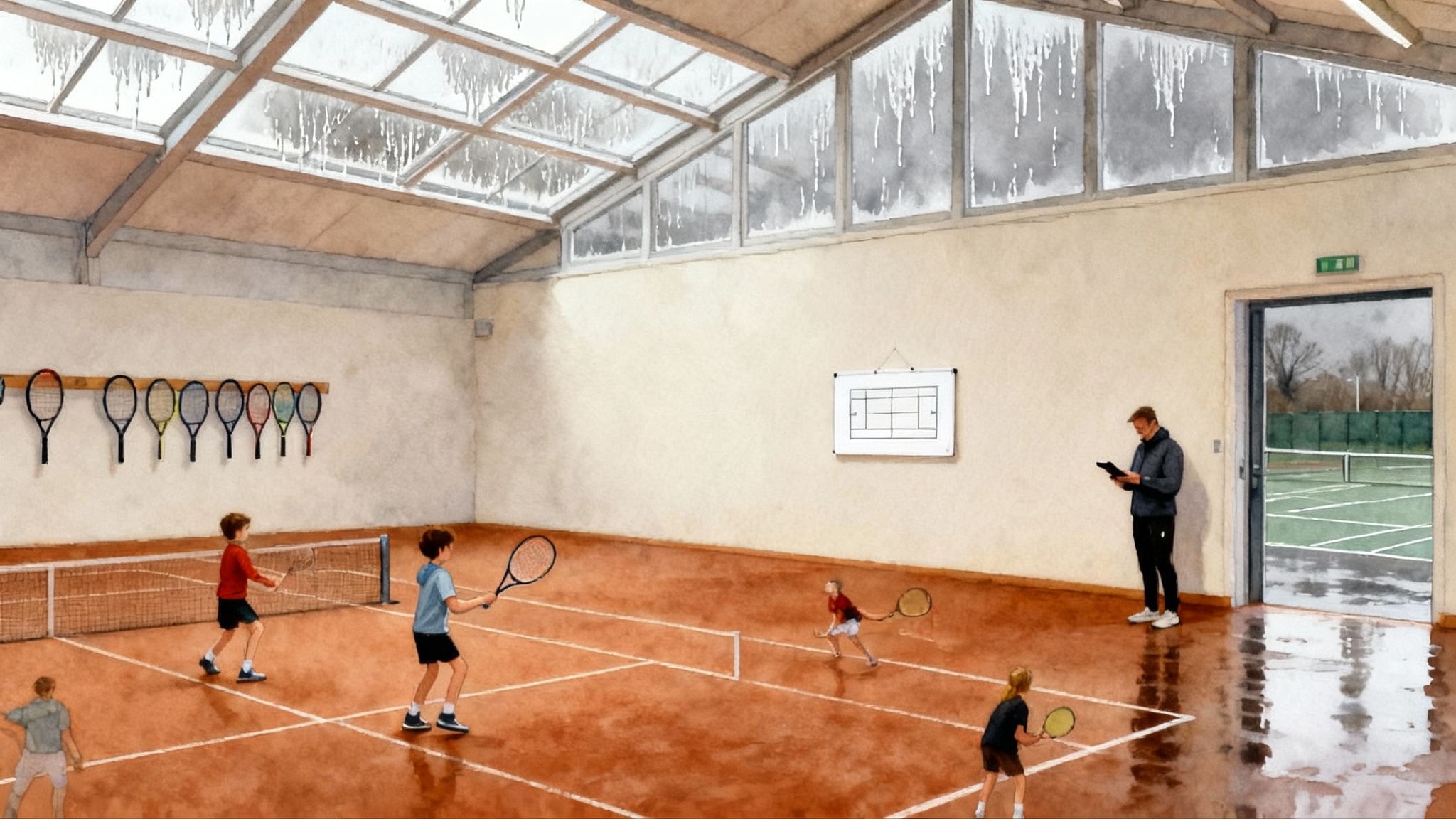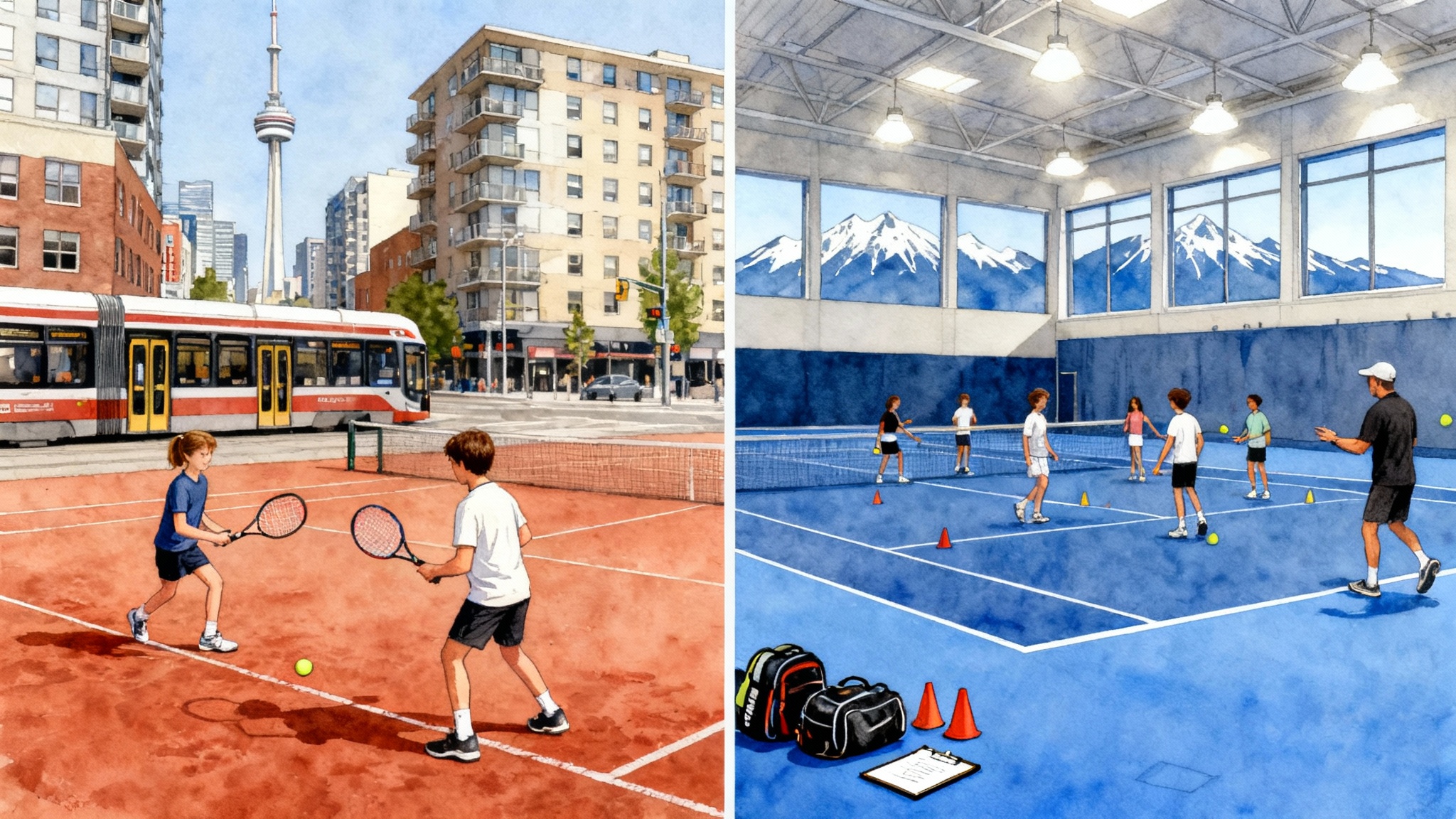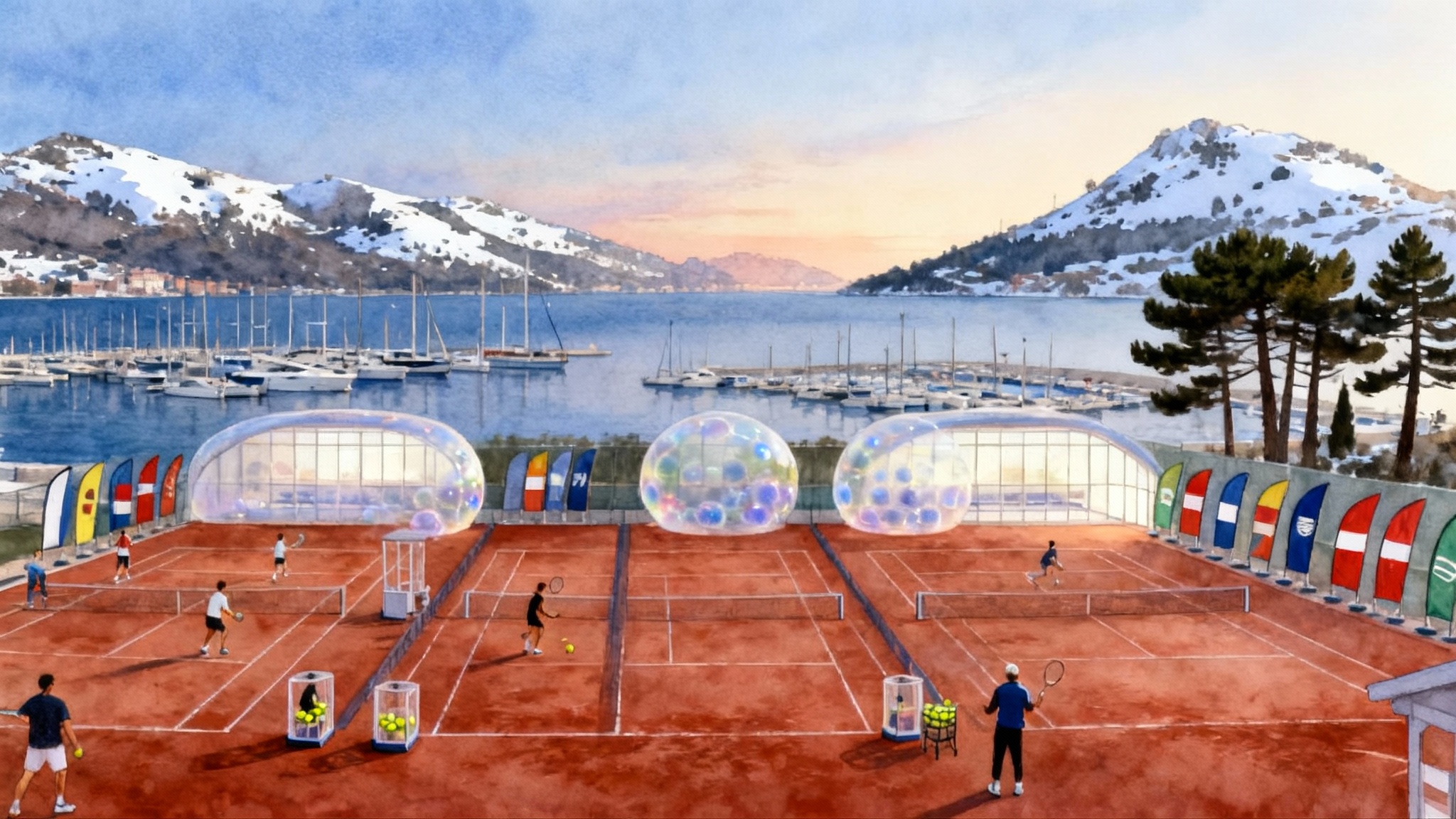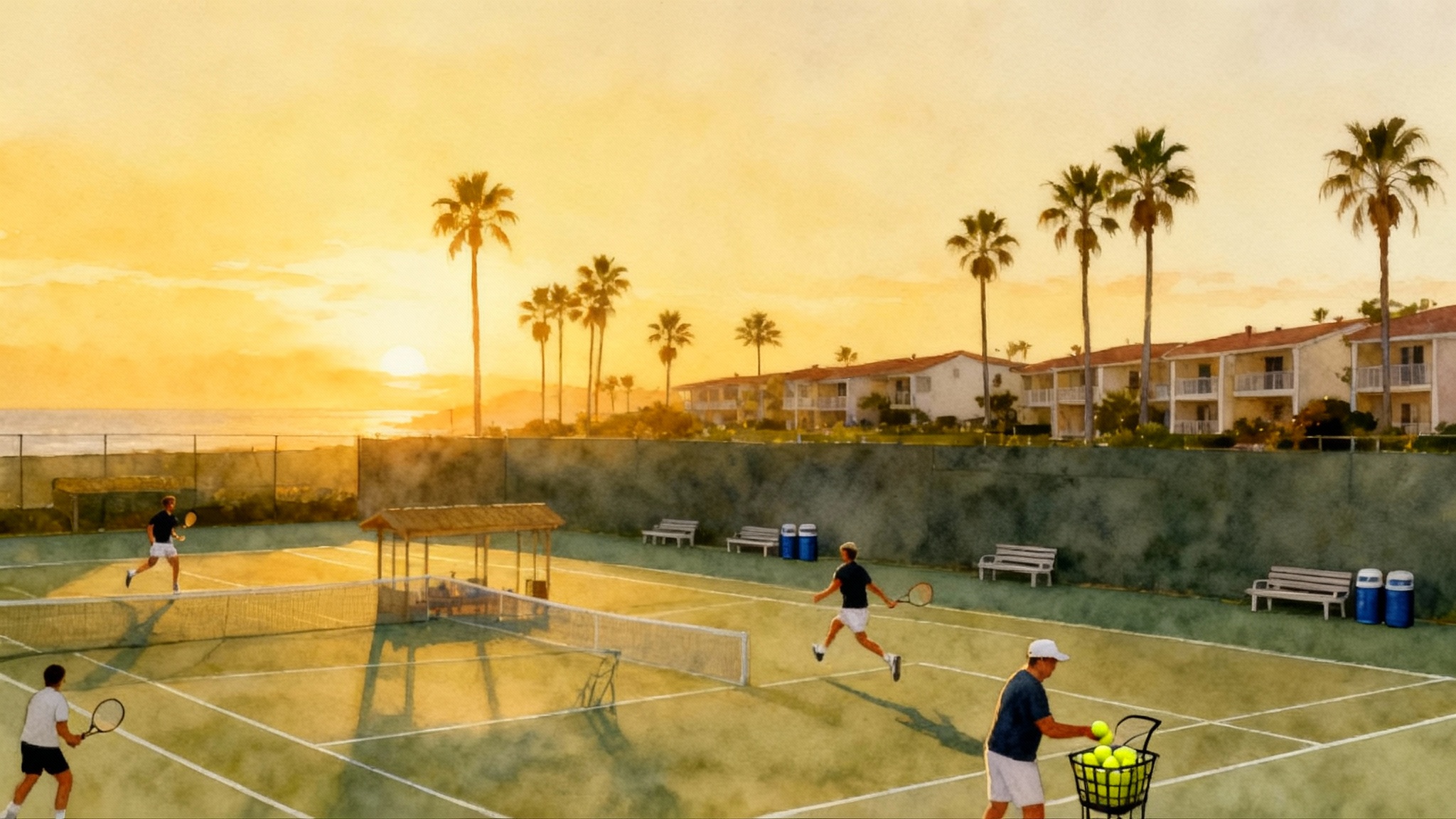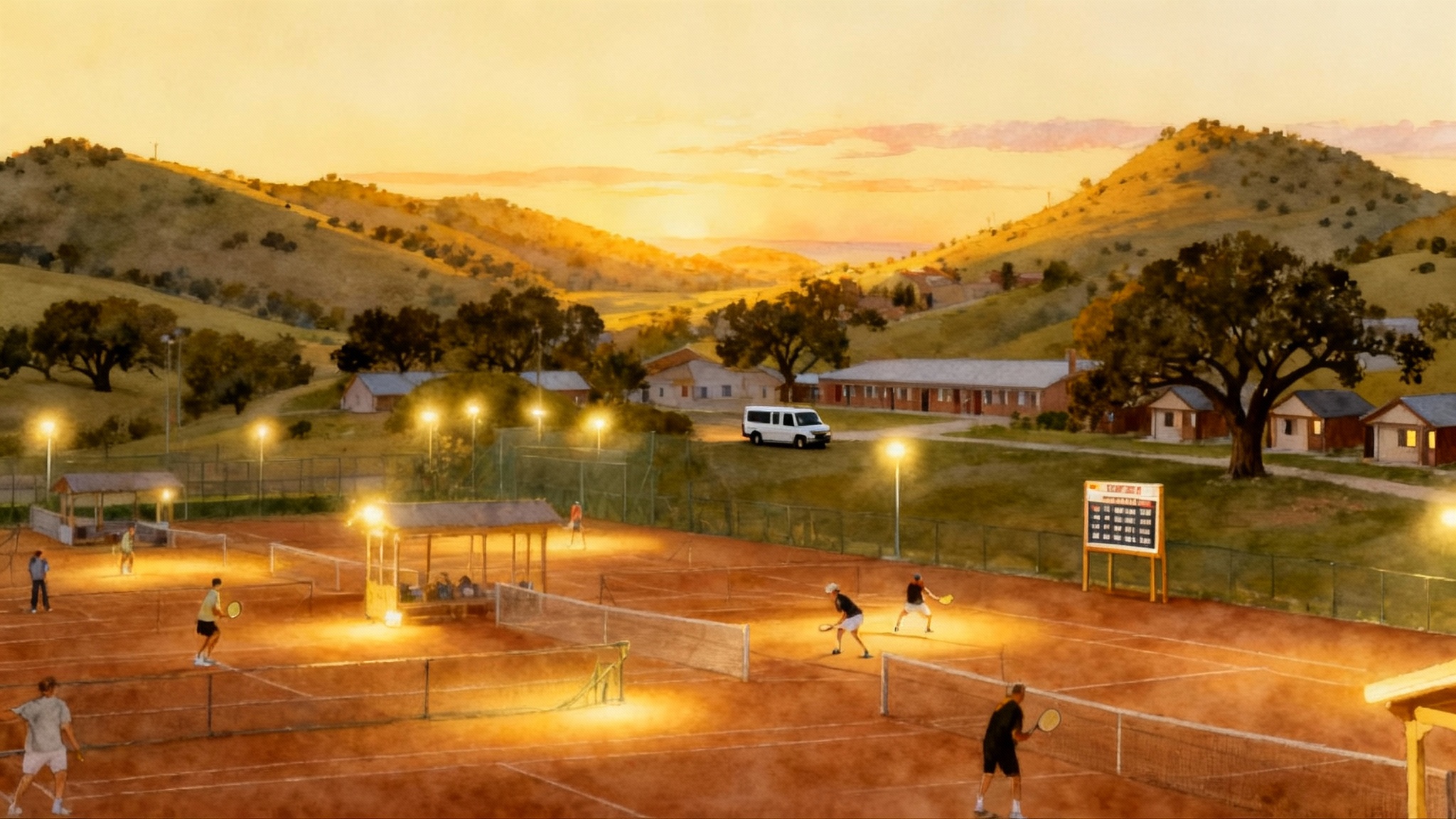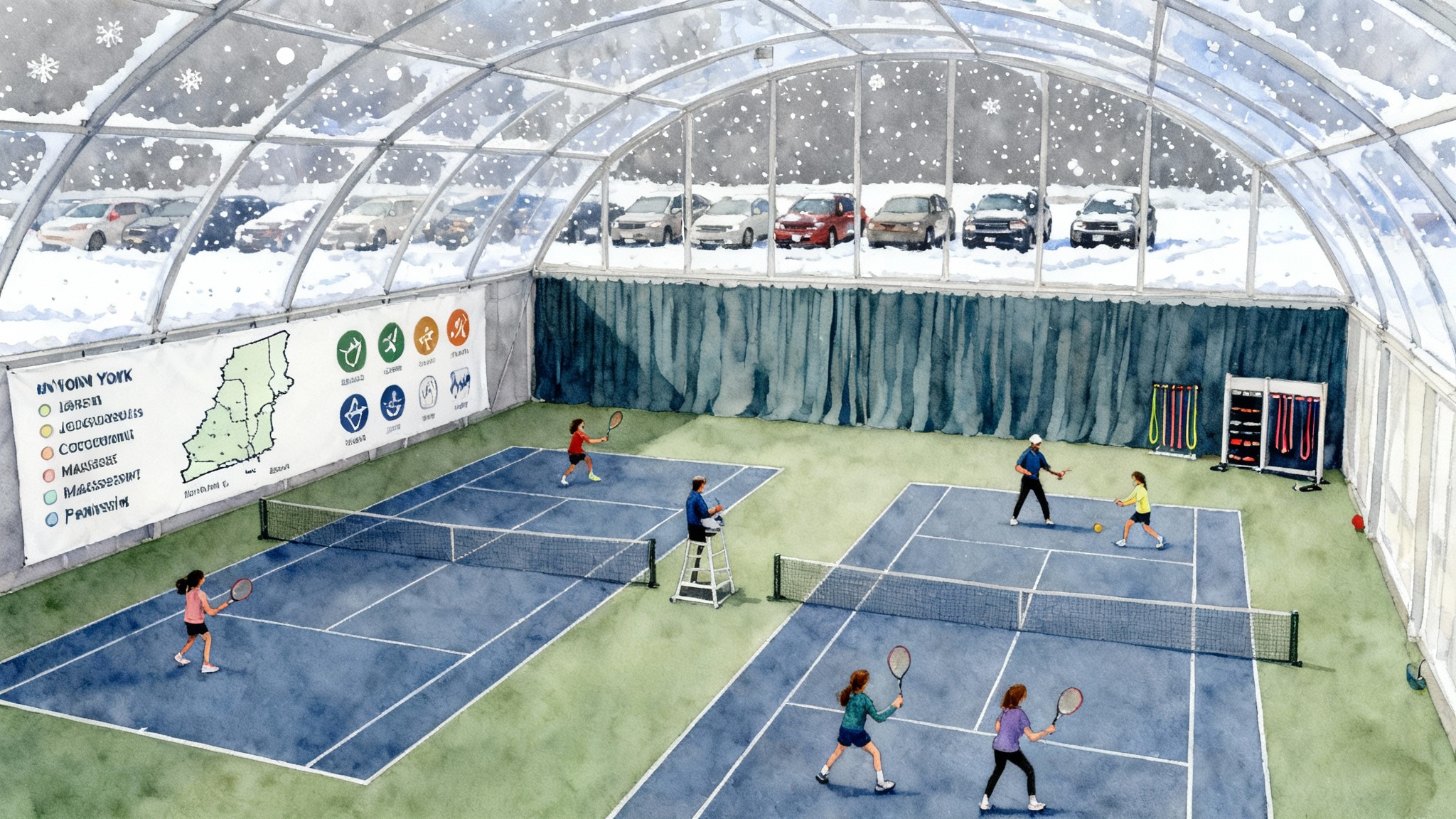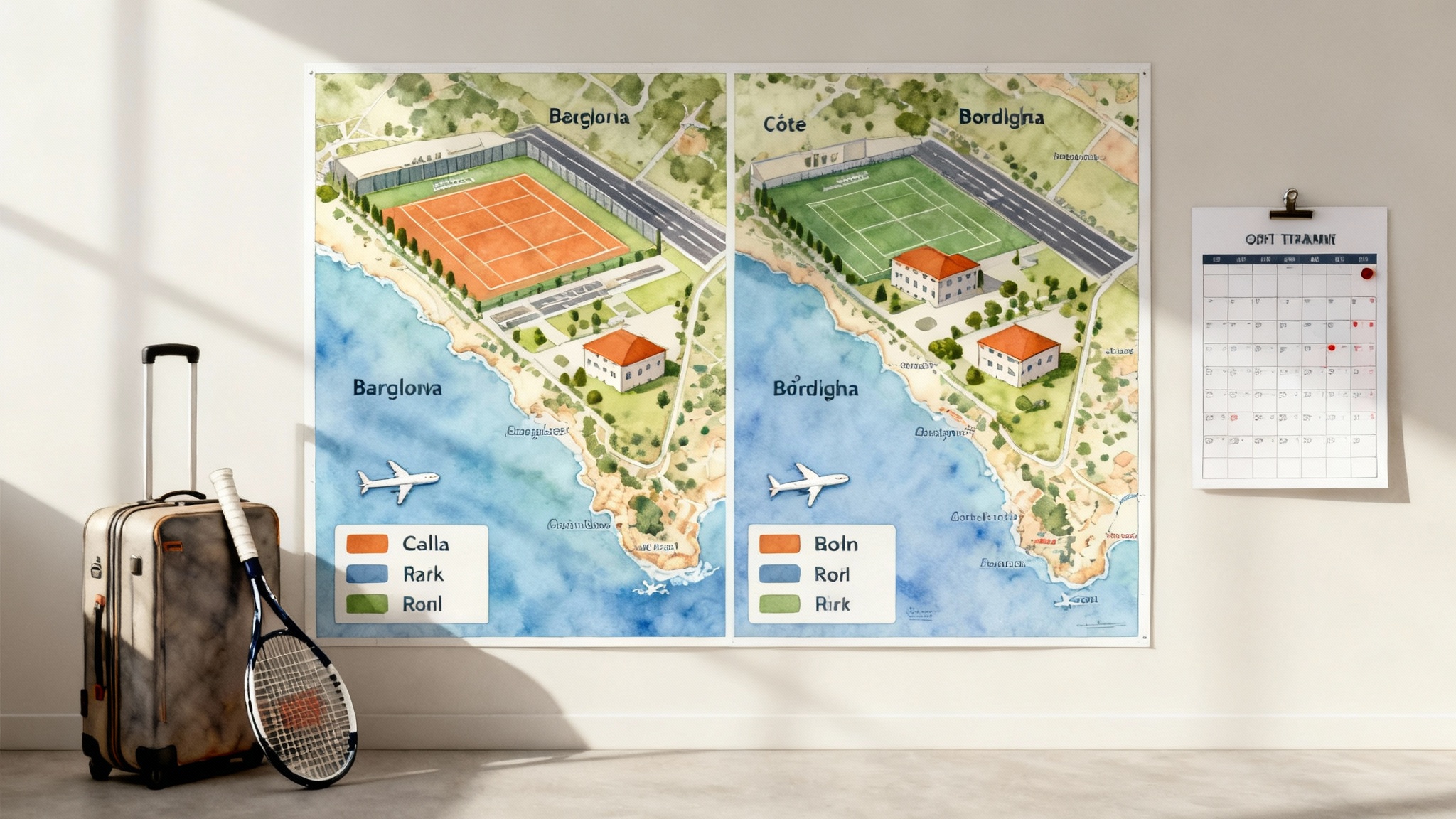Best Mountain West Tennis Academies 2025–2026 Guide
A practical guide to Arizona, Colorado, Utah, and Nevada tennis academies for 2025–2026. Compare desert and altitude training, boarding versus commuter models, court surfaces, coaching ratios, budgets, ratings, academics, and travel logistics.
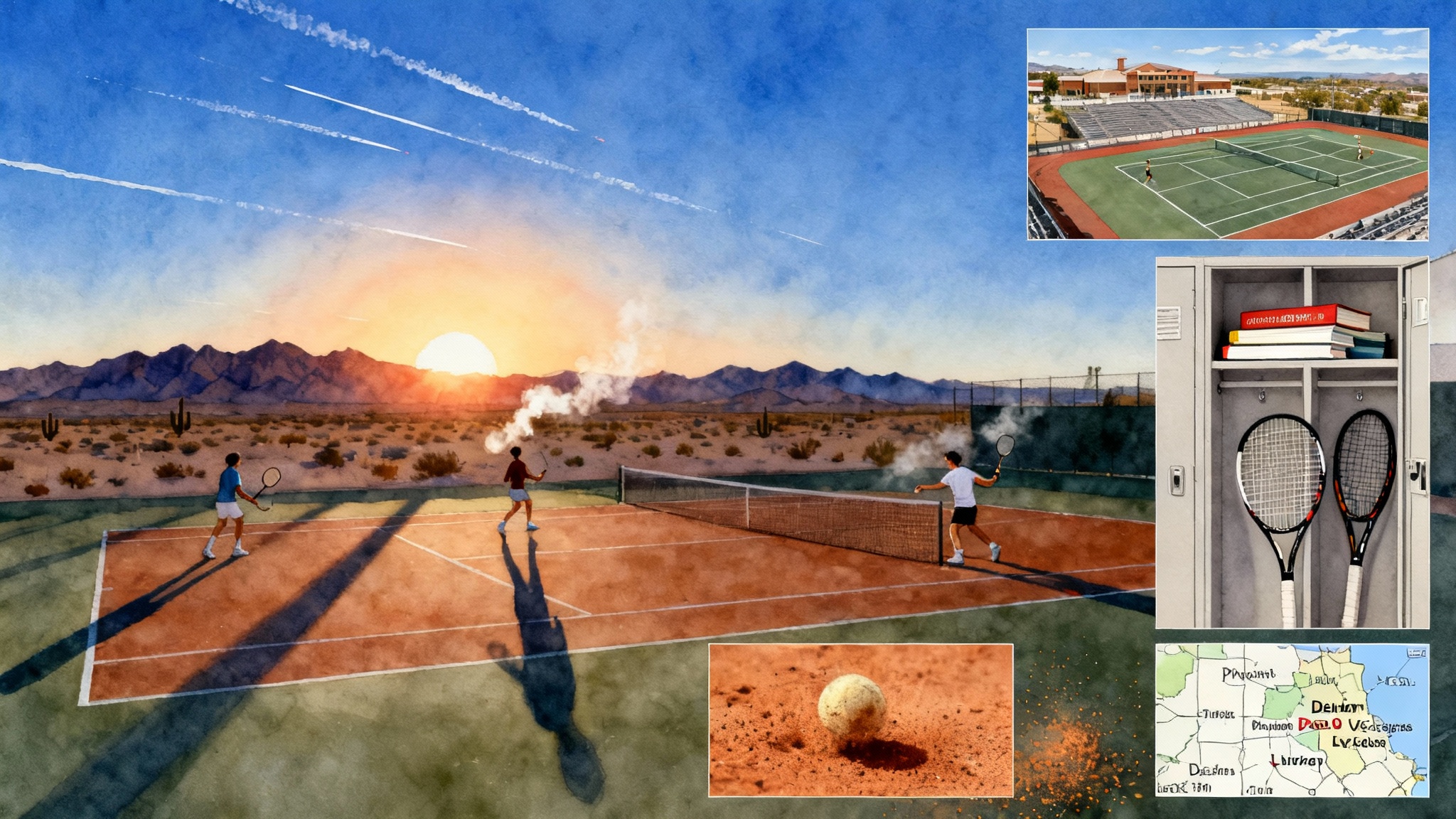
Why families are looking West in 2025–2026
From Phoenix to Denver to the Wasatch Front and Las Vegas, the Mountain West offers two training environments that shape players in very different ways. Desert hubs give you volume, sun, and hard court repetition. Altitude hubs make the ball jump, the lungs work, and decision making matter. If your player aims to climb ratings, prepare for college tennis, or simply find a steady training rhythm with smart tournament access, this region can deliver it. The key is matching environment, schedule, and budget to your family’s reality.
This guide compares the region by what actually affects development and your calendar: training climate, surfaces, boarding versus commuter models, coaching ratios, budgets, UTR and WTN strategy, United States Tennis Association tournaments, academics, and travel logistics. We spotlight two anchors, Arizona Tennis Academy in Phoenix and Denver Urban Youth Tennis Academy in Denver, then map notable options in Las Vegas and Salt Lake City.
Desert vs altitude training, explained simply
Think of a ball on a trampoline compared with a ball on firm ground. At higher altitude, the air is thinner, so the ball travels faster and bounces higher, like a trampoline. In the desert at lower elevation, the ball behaves closer to sea level, like firm ground, but the heat and dryness make hydration and grip management central.
- Arizona and Las Vegas: lower elevation, long dry seasons, many public and club hard courts. Summer heat shifts best training to early morning and evening blocks. Players build repeatable patterns and fitness through volume when the sun cooperates.
- Colorado and Utah: elevation from roughly 4,000 to 6,000 feet in the main metro zones. The ball flies more, timing windows shrink, and spin management becomes essential. Winters push sessions indoors or into shorter, layered outdoor blocks.
Development takeaway: rotate environments if possible. A desert block to groove patterns, then a high altitude block to stress timing and decision speed. If rotating is not realistic, choose a primary base that complements your player’s current gap.
Boarding vs commuter models
- Boarding models: best for families outside the region who want day-to-day continuity. Expect study hall, supervised recovery, nutrition support, and chaperoned tournament travel. Costs are higher but logistics are simpler if your family is far away.
- Commuter models: best for families within 30 to 60 minutes of the courts who can build a stable weekly routine. You control academics and meals, and you can add targeted privates or performance care à la carte.
Action: before you compare price tags, map your weekly timeline. Write down commute time, homework windows, public school or online school rules, and a realistic weekend tournament radius. The best model is the one you can sustain for 40 to 45 weeks, not the one that looks ideal on paper.
Clay and hard court mix
Hard court volume is the region’s baseline. Clay courts exist but in clusters. Clay improves point construction, footwork elasticity, and patience. If your player is a first-strike baseliner who loves quick points, a clay day each week can stretch patterns and improve neutral ball tolerance.
- Phoenix and Scottsdale: the best chance for a consistent clay rotation, though still secondary to hard courts.
- Denver and Salt Lake City: clay availability is more limited, usually at specific clubs. Many programs simulate clay themes on hard courts through constraints, like higher net targets and cross-court pattern drills.
Ask for a concrete plan. For example, two clay or clay-emulation sessions per week for eight to twelve weeks before spring nationals, with drill sets that emphasize rally length, height, and width.
Coaching ratios and session design
Quality in this region still rides on ratio and structure. Ask for clarity on these numbers:
- Group drills: a 4 to 1 to 6 to 1 player to coach ratio is typical for strong academies. Anything above 8 to 1 should come with smart station design and rotating live ball to keep reps honest.
- Live ball blocks: look for 25 to 35 minutes in a set, then a short recovery, to mirror match stress while protecting shoulders.
- Point construction progressions: cross-court constraints, add the line, then add serve plus one patterns, then full live points with score and consequence.
- Video and data: even one tagged match per week builds objective feedback. A slow motion serve review, a rally length chart, or a first serve percentage trend can change how a player practices on Monday.
Budget ranges for 2025–2026
These ranges reflect typical Mountain West pricing, which varies by facility type and whether boarding is available.
- Commuter performance programs: 1,200 to 3,500 dollars per month for 4 to 5 days per week, not including privates.
- Private lessons: 80 to 175 dollars per hour depending on coach seniority and facility.
- Strength and conditioning: 25 to 60 dollars per small group session.
- Boarding packages: 35,000 to 65,000 dollars per academic year with academics and room included. Summer residential blocks are often 1,800 to 3,500 dollars for two weeks.
- Travel: within the region, plan 250 to 700 dollars per two day tournament for gas, hotel, and food. Flights increase that budget quickly, so ground travel is a strategic advantage.
If a program is significantly below or above these ranges, ask what is included. Lower price can mean leaner support or larger groups. Higher price can mean access to indoor courts or bundled academic support.
Ratings, schedules, and tournament access
Families in the Mountain West juggle three parallel incentives: strong practice blocks, weekly match play, and a rating pathway that actually reflects skill growth.
- UTR, called Universal Tennis Rating, is widely used by college coaches and many academies for level-based play. Read the basics in the official explainer on how Universal Tennis Rating works.
- WTN, World Tennis Number, is the International Tennis Federation’s global scale used by many federations and increasingly by college tennis for context. See the ITF World Tennis Number overview to understand banding and match weight.
In practice, most Arizona, Nevada, Colorado, and Utah academies run level-based match days and encourage a mix of United States Tennis Association section events and Universal Tennis tournaments. Phoenix and Las Vegas often offer denser draws year round. Denver and Salt Lake City have strong indoor winter calendars and a wave of outdoor options from April through October.
Action: build a 12 to 16 week tournament ladder with two targets each month, one local and one reachable by a four to six hour drive. Use weekday match play to tune next weekend’s patterns, not to collect random scores.
Academics and school integration
- Public or charter school: commuter academies in Denver, Phoenix, and Salt Lake City commonly adjust start and end times so players can train before or after school. Expect homework hours to cluster at night or in study halls.
- Online or hybrid school: boarding programs in Phoenix, and some commuter families in Denver and Las Vegas, use online school to open up midday training windows and recovery blocks.
- College guidance: ask for a recruiting calendar, sample emails, and video templates. A good program will show you how a sophomore season looks on paper and how to build film that a college coach actually watches.
Travel logistics by city
- Phoenix metro: two major airports, Phoenix Sky Harbor and Phoenix Mesa Gateway. Year round driving to United States Tennis Association Southwest events, with quick hops to Southern California junior academies guide. Summer heat means early sessions and night matches.
- Denver metro: Denver International Airport plus regional airports. Winter requires indoor court planning and flexible weekend travel, but spring through fall is a commuter’s dream with many public courts and clear weather.
- Las Vegas: Harry Reid International Airport connects to most hubs. Strong weekend travel to Southern California, Arizona, and Utah. Summer training requires early mornings and shade planning.
- Salt Lake City: Salt Lake City International Airport, easy drives to regional tournaments. Winter indoor strategy is essential, spring and fall are excellent for outdoor blocks.
Anchor Spotlight: Arizona Tennis Academy, Phoenix
Arizona Tennis Academy has built a desert model around long outdoor blocks and precision in the heat. Families use it for year round commuter training, winter and spring peak blocks, and boarding for out of state players who want steady volume with an academic plan.
- Training design: morning technical series, late afternoon live ball, and targeted night matches in summer months. Hydration, electrolyte planning, and on court shade breaks are treated like part of the skill set, not a sidebar.
- Surfaces: mostly hard courts with scheduled clay rotations at partner sites. Clay weeks lead into spring nationals and summer travel blocks to give players a wider tactical range.
- Coaching ratios: performance groups typically set to 4 to 1 to 6 to 1, with tiered courts by level. Match days assign a court lead who tracks serve percentage and first two shot patterns.
- Academics: boarding students follow an online curriculum with proctored study hall blocks. Commuters coordinate with local public and charter schools. Families see a four week plan that balances test weeks with tournament peaks.
- Tournament access: Phoenix sits in the heart of the United States Tennis Association Southwest Section. Draws are reliable, and it is a manageable drive to Southern California for deeper fields. Universal Tennis match days fill midweek rating needs without burning weekends.
- Who thrives here: players who need volume, repetition, and a clean serve plus one plan. Baseliners who want to add clay patience before nationals. Out of state families who prefer a closed loop boarding model in a sunny climate.
A simple way to test fit is a two week pilot: five group sessions per week, one private lesson, one strength session, and two match days. Combine that with one United States Tennis Association event within a 75 minute drive. If your player comes home with clearer serves, longer neutral rallies, and a calmer on court routine, the model is working.
Anchor Spotlight: Denver Urban Youth Tennis Academy, Denver
Denver Urban Youth Tennis Academy operates inside a true altitude laboratory. The ball flies, footwork must compress and expand, and decision speed gets tested daily. The academy’s mission is inclusive and community focused, with scholarship pathways, but its performance track is intentional and structured.
- Training design: shorter, sharper live ball blocks that teach height control, margin, and spin shape at altitude. Players learn to flatten approach balls and ride heavy topspin safely above the net tape.
- Surfaces: hard courts dominate. The program uses constraint drills to simulate clay tactics when clay is not available. Indoor partners protect winter training, so the calendar does not stall in January and February.
- Coaching ratios: groups sit in the 4 to 1 to 6 to 1 range, with advanced pods capped to protect ball quality. Coaches chart rally length and unforced errors aggressively so altitude does not become an excuse.
- Academics: most athletes are commuters with public school or charter schedules. Study tables run at the facility for test weeks. College guidance is built into spring with film days and email templates.
- Tournament access: the United States Tennis Association Intermountain Section offers indoor winter events and deep summer calendars. The academy coordinates carpools and van travel to keep costs sane for families.
- Who thrives here: competitors who need to improve patience, margin, and point tolerance. Players who tend to overhit at sea level and want altitude to force discipline. Families who value community and access, including scholarship routes.
A practical fit check looks like this: six weeks with three group sessions per week, one private lesson every other week, one weekday match play slot, and one tournament per month. Watch for fewer spray errors, better height control, and more intentional transition patterns.
Notable options in Las Vegas and Salt Lake City
Las Vegas is a tournament and travel hub with year round match density. Private academies cluster near Summerlin and Henderson, and the city hosts frequent events that draw players from California and Arizona. Training calendars shift earlier in the day in summer. Families often build a hybrid model, a commuter base in Las Vegas with monthly trips to Southern California for depth of draw.
Salt Lake City combines mountain access with a manageable metro grid. Winter indoor bookings require planning, so families who reserve blocks early enjoy consistent weeks. Commuter academies coordinate school schedules and build indoor to outdoor transitions in March and April. If your player struggles with the ball flying long, Salt Lake can be a smart long term base because daily altitude feedback forces disciplined margins.
When you evaluate any Las Vegas or Salt Lake City option, ask for three items: a month of session plans, a sample match chart, and a travel calendar. Programs that can show you these on paper are usually organized on court.
Sample family playbooks
- Phoenix boarding track, college bound junior: nine month boarding with online academics, five group sessions weekly, two strength sessions, one private lesson, and 14 tournaments within a two to five hour drive. Summer block includes clay rotations before nationals. Goal markers include first serve percentage above 60 percent and a balanced rating trajectory.
- Denver commuter track, multi sport freshman: three afternoon sessions weekly, one indoor winter slot, and one monthly tournament within a four hour radius. A Sunday league fills rating needs. Academic load stays stable, and the player peaks for spring high school season.
- Las Vegas commuter plus travel, international senior: four sessions weekly, one private lesson, and a monthly drive to Southern California. Film day every two weeks. The player uses altitude weekends in St. George or Flagstaff to keep timing adaptable.
Decision checklist you can act on this week
- Calendar reality check: map your family’s next 12 weeks. Identify exam weeks, holiday travel, and realistic training days.
- Program verification: request written ratios, weekly plans, and winter indoor access. Ask to observe a full session.
- Surface plan: write a clay or clay-emulation block that runs eight to twelve weeks before nationals. Confirm court access.
- Ratings and tournaments: build a two month ladder with one local and one driveable event each month. Balance Universal Tennis match play with United States Tennis Association draws.
- Budget guardrails: set monthly and quarterly caps. Add a 20 percent buffer for travel and unexpected private lessons.
- Fit pilot: run a two to six week trial with one private lesson and one match day per week. Keep a simple scorecard, serve percentage, rally length, and unforced errors.
The bottom line
The Mountain West rewards families who plan like coaches. Desert hubs like Phoenix and Las Vegas supply volume and dependable match play. Altitude hubs like Denver and Salt Lake City sharpen margins, patience, and decision speed. Pick the environment that grows the skill your player lacks today, then lock in a calendar you can sustain. If you do that, the right academy will not feel like a leap of faith. It will feel like a schedule that fits, a court culture that teaches, and a set of habits that travel with your player anywhere they compete.
